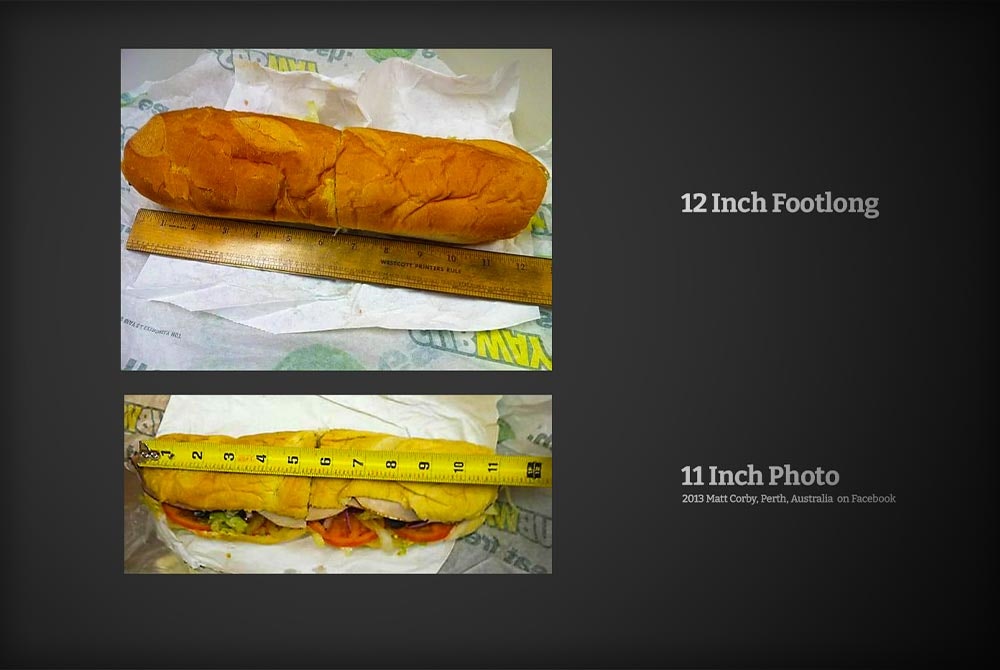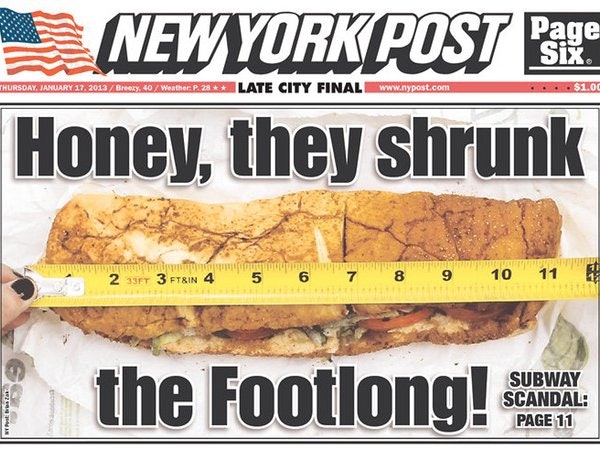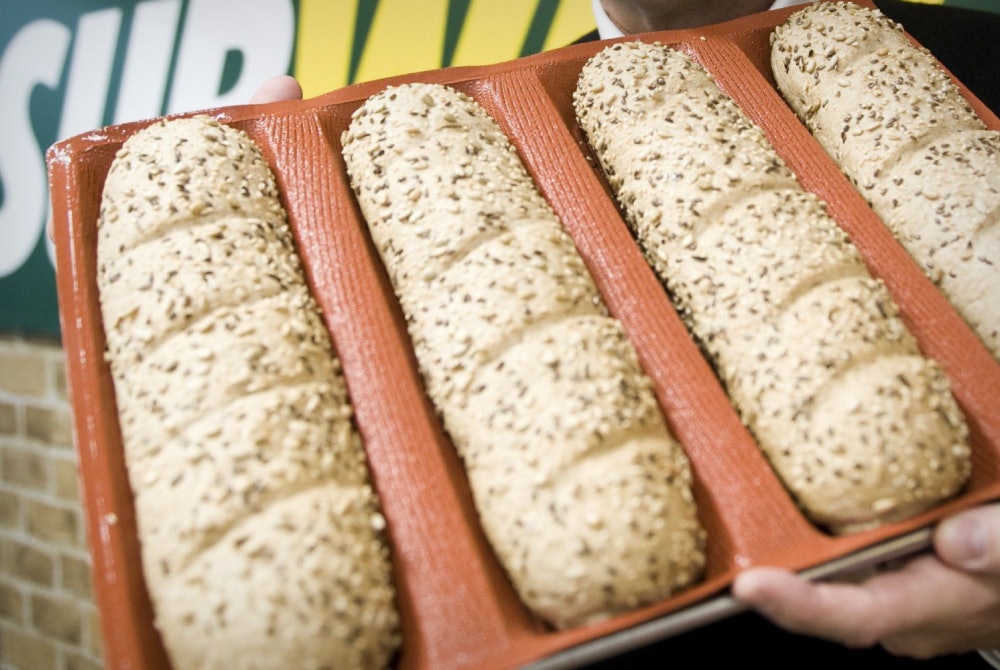- How Did The Subway Footlong Inquiry Begin?
- Class Action Lawsuit: Does Size Really Matter?
- Bottom Line: The Subway Footlong is Legitimate
- Frequently Asked Questions
In 2013, a teenager from Perth, Australia, posted a photo that sparked a widely reported news article and a subsequent lawsuit. Subway was accused of advertising and selling their flagship Subway footlong sandwich at only 11 inches long. 
This begged the question: Is the Subway footlong actually 12-inches or have we been getting the short end of the stick for years?
How Did The Subway Footlong Inquiry Begin?
When the picture first of the under 12-inch footlong appeared, there seemed to be no disputing the photographic evidence. This sparked further inquiry when the New York Post quickly picked up the challenge, sending interns out to buy seven Subway footlong sandwiches. 
The New York Post quickly found that four out of the seven footlong subs they purchased in New York "measured only 11 or 11.5 inches." Testing just seven sandwiches appeared to be the level of their investigation, even though New York had 168 Subway restaurants at the time.
The idea that Subway was cheating consumers from one inch of sandwich stoked the rage of a few consumers.
Class Action Lawsuit: Does Size Really Matter?
The settlement documents in the court case showed that Doctor's Associates (Subway's parent company) was able to defend against the class action for the following reasons:
The Majority of Sandwiches are 12-inches Long
Doctor’s Associates showed that their testing revealed that the vast majority of bread rolls sold in Subway restaurants were at least 12 inches long.
They also showed that if any of the bread rolls were actually shorter than 12 inches, it was less than 1/4-inch shorter than 12 inches (a worst-case of an 11 and 3/4 inch sub).
Some may argue that Subway was guilty of ensuring that their footlong sandwiches were a perfect foot in length when they left the oven (imagine the waste if they threw out those pieces of bread).
However, as the bread is baked on-site in each Subway store, the investigation moved onto the dough sticks supplied to each store to bake the bread.
The Mass Matters More Than Its Length
As with all baking, the process of baking in a store can be uneven due to variations in heat, airflow in the oven, moisture, and other factors.
Due to this, some bread rolls may not expand to 12 inches in the oven, but they all come from an equally measured dough stick.
Subway was shown to be delivering precisely measured dough sticks to their stores, meaning that any bread rolls shorter than 12 inches resulted from natural fluctuations in baking.
Quote From the Settlement Documents...all of the raw dough sticks used to bake Subway bread weigh exactly the same. The dough sticks arrive at the restaurants frozen, and are then thawed, stretched, allowed to rise, and baked. Due to natural variability in this process, the final loaves may have slightly different shapes.
Some loaves will be slightly shorter and wider than others. But because all loaves are baked from the same quantity of dough, each loaf contains the same quantity of ingredients.
The dough's weight and the total amount of dough in the bread rolls were the same, even if the dough did not expand to the full 12 inches on some occasions. Therefore, the natural changes in baking meant that some dough sticks expanded to 1/4 inch less than their desired length.
The Customer Is In Control
You could argue that an 11.75-inch sub might have a few grams less mayonnaise or lettuce on it than a 12-inch sub. However, that argument would only hold up if the entire process of sandwich making was standardized.
But it's not. At Subway, the sandwiches are made in front of the customer, and the staff grab handfuls of each ingredient (completely un-standardized).
Customers are free to ask for extra lettuce, tomato, and any other toppings, meaning that an 11.75-inch sub can end up with much more density than a 12-inch sub based on the customer's choices. Therefore, Subway was not actively attempting to deceive customers into a 'cheaper, shorter product' by not having an exact 12-inch length in 100% of subs.
Bottom Line: The Subway Footlong is Legitimate
The lawsuit was settled, with Subway settling on an amount of $520k to cover the complainants' legal fees and limit any ill-feeling. Complainants were not awarded damages since Subway was not shown to be hurting customers.
Even if your Subway sandwich did come out of the baking over at 11.75-inches-long, you are not getting any less bread as the dough sticks are identical. Any difference in length is due to natural baking differences in store. Subway is not scamming people.
Quote from the Settlement Documents...the amount of meat and cheese included with each sandwich is standardized. Thus, a sandwich that is slightly shorter than 12 inches contains the same amount of meat and cheese as it would have had it measured exactly 12 inches.
It is theoretically possible that a sandwich made on a slightly shorter loaf would contain a slightly diminished quantity of toppings—a sandwich that was 1/4-inch shorter than advertised might be missing a few shreds of lettuce or a gram or two of mayonnaise.
However, Subway sandwiches are made to order in front of the customer, and if the customer asks for more of any particular topping, the employee making the sandwich will add more of that topping to the sandwich.
And, as the customer, if you ask for more toppings, the Subway staff will add more toppings to your sandwich. Your 11.9-inch sub might contain more actual food/toppings/calories than the precise 12-inch sandwich made next to you. Baking fresh bread on the premises caused natural variations.
And rest assured, Subway now measures the bread as it leaves the oven. Thank the bread gods.


Comments